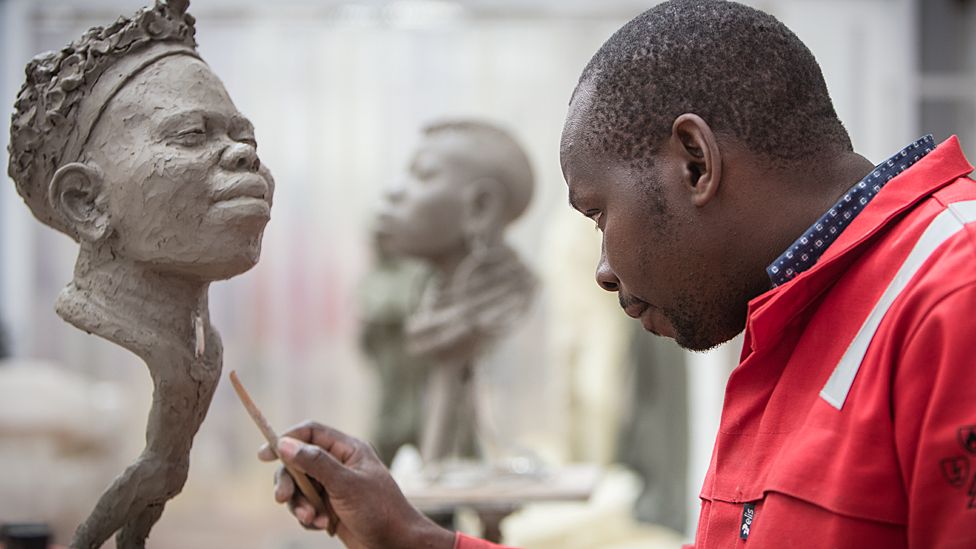-

-
-
Loading

Loading

Peter Oloya, a former child soldier from Uganda, has found joy in sculpture, a passion that was ignited during his childhood when he hunted for clay with his grandmother in the region of northern Uganda. This area was known for the brutal attacks carried out by the Lord's Resistance Army (LRA) rebel group. Oloya's grandmother taught him about clay and its uses, which fascinated him. They would follow grazing cows to find a specific type of clay called "punu," favored by both the cows and Oloya's grandmother for its minerals and its suitability for making pots. Oloya was captivated by his grandmother's skill in transforming clay into beautiful pots and was inspired by the designs she created on them. Today, Oloya is a renowned sculptor in Uganda, and his work is being exhibited in London. He is respected not only for his artistic talents but also for surviving the horrors of being abducted as a child by the LRA. One of his most famous works is a bronze sculpture of the national bird, the Crowned Crane, which was gifted to Queen Elizabeth II in 2007. He is also known for crafting the trophy for the BBC's African Footballer of the Year award for a decade. While Oloya currently works with materials like bronze, marble, and wood, his artistic roots lie in the clay he collected with his grandmother. Pottery, he says, is very sculptural, and clay has been a part of his life since childhood. However, he faced criticism from his Acholi culture, which viewed pottery as a feminine occupation. Regardless, he could not resist playing with clay and creating things from it whenever he had the chance. His first sculpture was inspired by his love for the radio, and he created a clay model of a radio, complete with indicator lights filled with fireflies. Oloya's childhood was marred by the conflict in northern Uganda, where he and his family were forced to live in internally displaced camps. When he was 11, he was abducted by the LRA while his family was harvesting sesame seeds. He spent 18 months as a captive, enduring unimaginable horrors. During this time, he turned to clay as a form of therapy, even using clay from termite mounds in the bush where he was held. Eventually, he managed to escape, and art became his refuge. After graduating from art school, Oloya returned to the IDP camps to give art lessons, nurture talent, and organize exhibitions. He believes in the transformative power of art and its ability to change lives. Today, he is setting up a museum of Acholi art and culture in his village. In his exhibition in London, Oloya explores themes such as beauty, the cultural clash between modernity and tradition, and the environment and climate. One of his pieces, titled "Fault," depicts a cracked earth with a small human figure trapped in one of the fault lines, symbolizing the negative impact of climate change. Another piece portrays a crying child holding a green seedling, representing hope and the need for humanity to care for the planet like a distressed child asking for help. Oloya also incorporates modern symbols, such as old mobile phone keyboards, into traditional bark cloth dresses to highlight issues of plastic waste and imported goods in Africa. Additionally, he has created gourd sculptures with African decorative patterns and the logos of global beverage corporations, addressing the impact of globalization on African cultures. Oloya's art has provided him with a language to spark conversations and make a difference. His exhibition, titled "A Journey from Adversity to Artistry," is on display at Pangolin London until March 2, 2024.